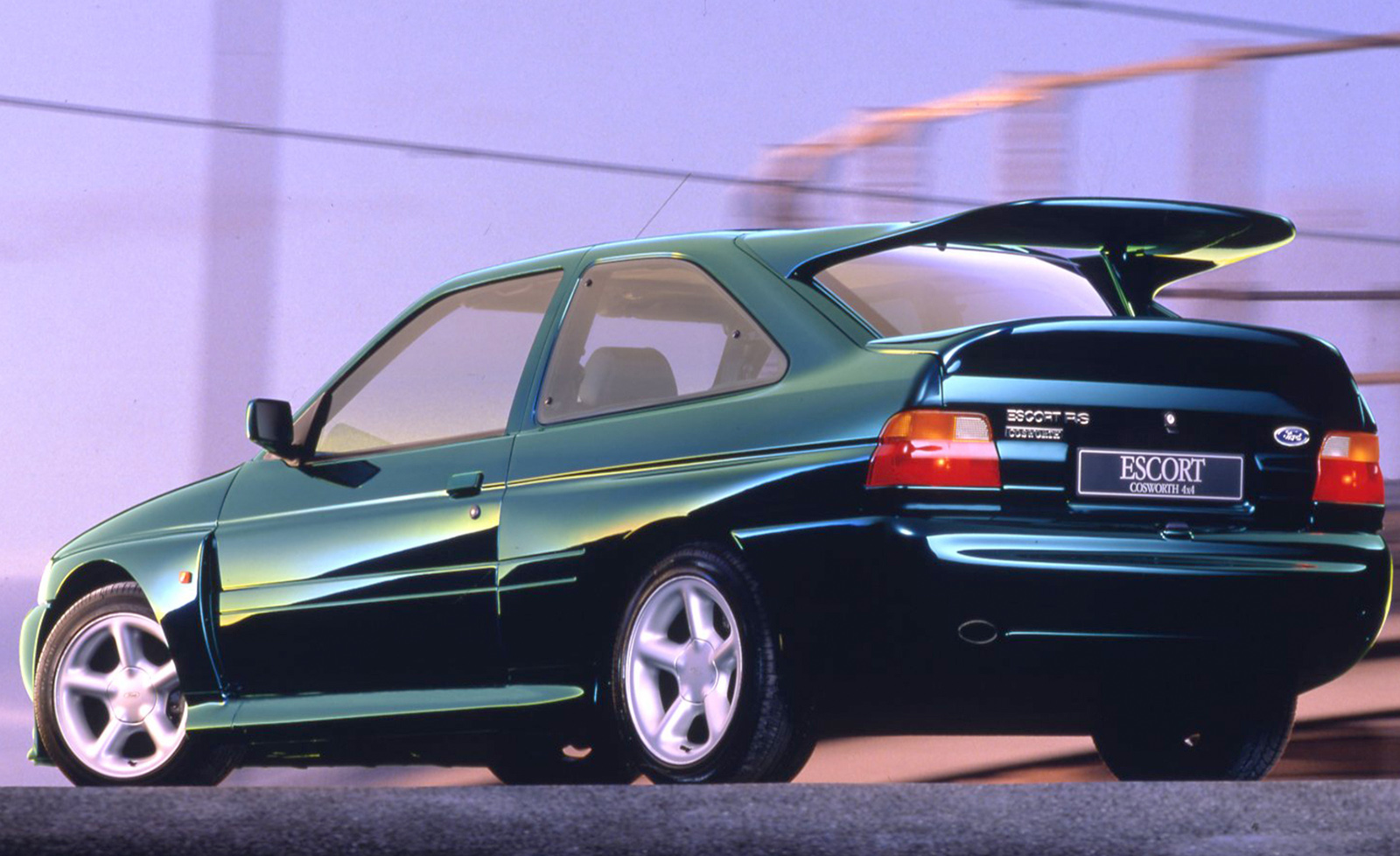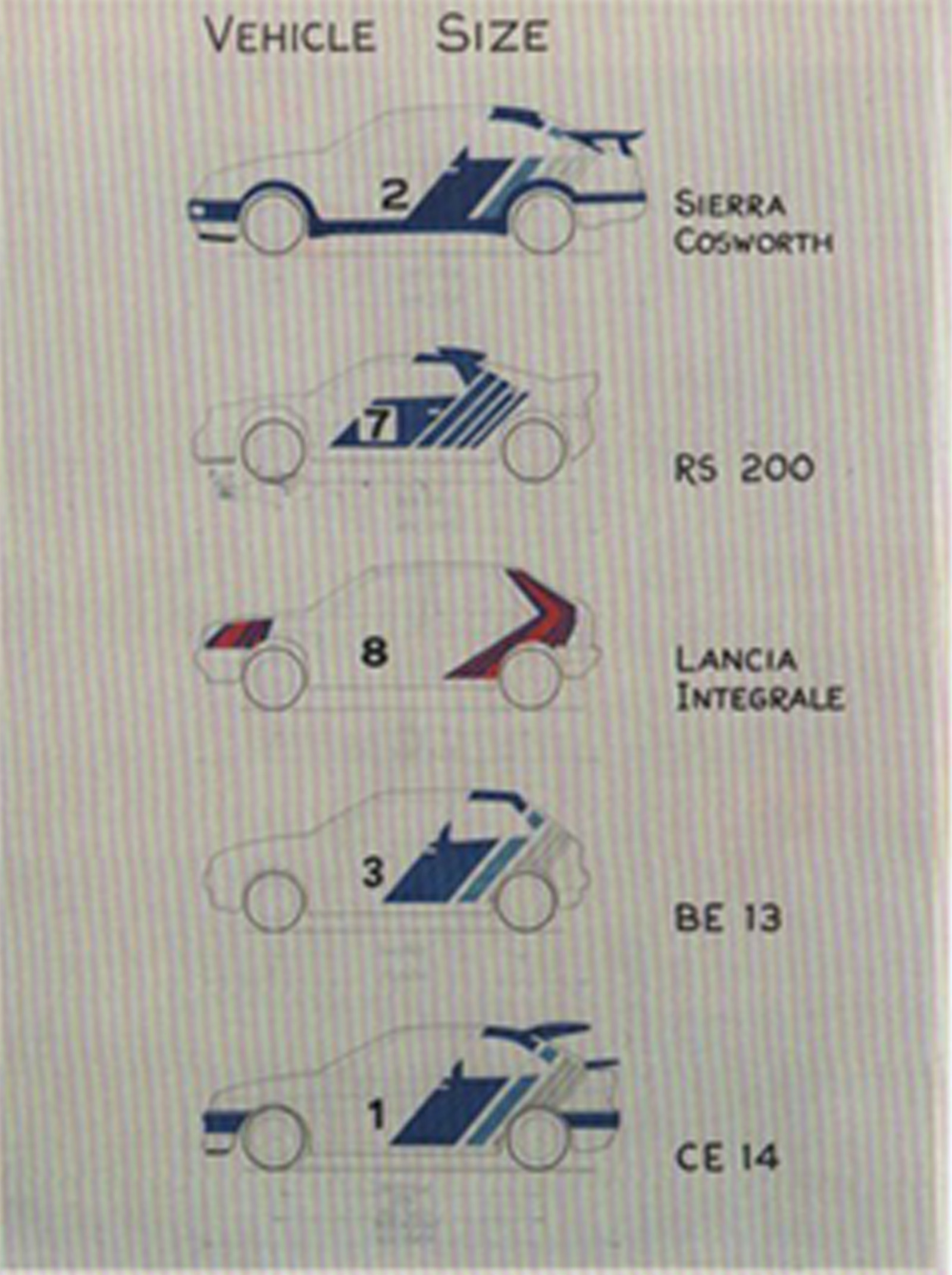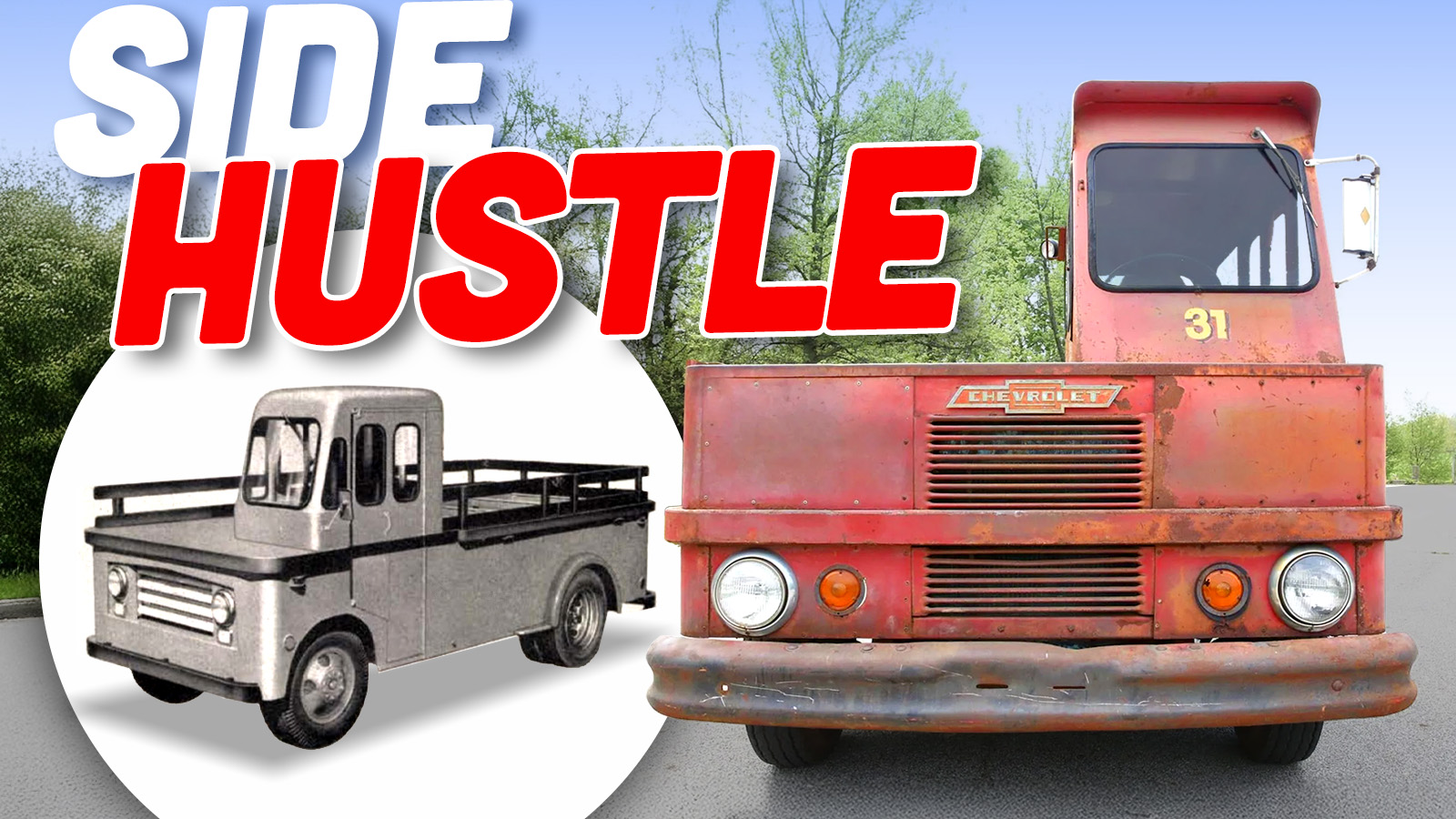You’re a global OEM with a long and proud motorsport history. But both your most recent attempts to get a purpose built rally machine off the ground have failed miserably. The next version of your mass market best selling car is stinking out customer clinics, a year before it’s even released. You need a halo homologation special, and fast. The problem is all your resources are tied up on other projects, and you don’t have suitable platform available. Time for another Damn Good Design.
If this series were called Damn Terrible Design, we’d be here for a month discussing exactly what went wrong with the design and development of the reviled fifth generation European 1990 Ford Escort, a car so bad it was facelifted within two years of going on sale. The brief version is that Ford had been stung by the initial failure of the Sierra, its futuristic design and lack of a traditional three-box saloon putting buyers off. Ford had to hastily design a Sierra with a boot (the 1987 Sierra Sapphire) to save the car and this lack of sales and mis-reading of the market had consequences in the Ford product planning department. The release of another big-seller, the Mk3 Fiesta, was delayed until to 1989 . As a result of all this turmoil, during the mid eighties Ford of Europe was short of funds and stretched very thin. The strong-selling Mk3 and then Mk4 Escort were the only things keeping it all afloat.
The CE14 (C-class, Europe, project 14) 1990 Escort is a classic case of everyone making seemingly the correct decisions from a business point of view, only for them to turn out to be totally the wrong decisions from a product point of view. Differing requirements between the US and Europe meant the next Escort was not required to be a world car – Ford North America just needed something cheap and economical to bring their CAFE numbers down, so it could sell more profitable, less economical models. At the time, Ford owned 25% of Mazda, so it was decided to based the American Escort on the Mazda 323, which could be built cheaply in Mexico. Ford of Europe needed an Escort that would sell in greater numbers than its predecessor and crucially, make more profit per unit in order to make up for the losses from the Sierra.

Ford of Europe knew exactly how to sweat the assets. By the mid-eighties the Escort it was available as a three or five door hatch, a four door saloon (the Orion), a five door estate, a three door cabriolet, a van, and as the XR3i and RS Turbo hot hatches. It was with not a little arrogance that Ford of Europe management thought they knew exactly the formula for the next one; functionally better in every measurable metric but cheaper to build. It was a design brief born of hubris, that would turn out to be an impossible engineering circle to square. When it emerged in late 1990 the Mk5 Escort was barely an improvement on the Mk4: the mechanicals were mostly carryover, the equipment levels were thin (base models still came with a four speed gearbox) and compared to modern European opposition, it was terrible to drive. Worse still, the range topping XR3i was still at least two years away, and would emerge just as the hot hatch market was evaporating.
Boreham, We Have A Problem
Ford Motorsport, based in Boreham Essex, had a different problem. For years the Mk1 and Mk2 RWD Escorts had been tremendously successful in rallying – winning the world championship as recently as 1981. But the switch to FWD for the 1980 Mk3 Escort meant they no longer had the basis for a rally machine. An attempt was made with the stillborn RS1700T to create a RWD rally car from the Mk3 Escort, but this was scrapped when the world rallying adopted the infamous Group B regulations in 1982. In response, Ford created the RS200, which managed a year of competition before the regulations changed again for 1987. The 4WD Sierra Sapphire Cosworth was then pressed into service as a Group A rally machine, but it was too unwieldy to compete effectively – the Lancia Delta Integrale, a compact hatch with 2.0 liter turbo power and full-time four-wheel drive, was showing the way forward.

The Sierra would have to remain in service in world rallying until 1992, when the road car finally left production. After that, Ford Motorsport had nothing. Although running a works rally program was an expensive endeavor, the PR benefits were enormous. In addition to giving credibility to cooking XR and RS models in the showroom, Ford sold all the works parts over the counter to privateers giving an additional revenue stream. They simply had to be in the game.
It wasn’t just Lancia. Ford knew that Japanese rivals were looking to boost their image by getting involved on the world rally stage. The problem with the Sierra wasn’t just that it was too big, it only really developed downforce at the rear of the car. Any new rally weapon would need to make meaningful downforce at the front as well to give it any chance of being effective on all surfaces.
Making One Car From Two Very Different Cars
By late 1987 the CE14 1990 Escort exterior design was finalized. The exterior clays had been signed off and were being digitized ready for prototype tooling to be made. Ford Motorsport Chief Engineer John Wheeler had an idea. They had a set of well-developed, rally-proven parts from the Sierra – engine, drivetrain, suspension and so on. If these parts could somehow be made to fit into the more compact Escort platform, that might form the basis for a competitive rally car. There was just one small issue – the new Escort was front wheel drive. What if they used the top half of an Escort and the bottom half of the Sierra?




It Was Never Going To Have A Triple Rear Wing



The Exterior Design
What’s interesting about the Escort Cosworth is just how outrageous it ended up being. Let’s look at the whale tail. It first appeared on the original 3-door rear-wheel drive Sierra Cosworth. It was banished for the successor to that car, the booted Sierra Sapphire Cosworth in an attempt to move the car’s somewhat blue-collar image slightly upmarket. On the Escort it came back with a vengeance specifically to provide a benefit on rally stages. You could order your Escort without it, but why would you – it’s the visual signature of the car. The wing means it’s no longer a humble Escort – it’s a Cosworth.


The Escort is all aggression and purpose – the huge air intake on the lower surface of the bumper wasn’t enough – Harper had to dispense with the radiator grill and create another opening between the lights, and add a further slot above the license plate. It’s simple and menacing, an effect amplified by the large black spoiler underneath the bumper, which you don’t immediately read because it’s painted black. This helps the front bumper hide its bulk. Look at the intersection between the bumper, the sidelights and the extended fenders. Having a deeply defined feature line on the body creates a border either side of which you can have two surfaces going in different directions, but what it leads to here is an area where nothing really matches up. It is a bit messy but this adds to the impression you’re looking at something one removed from a real race car, built to go fast rather than being the last word in shut line management.

In the final result, the Sierra floorpan was shortened to such an extent that compared to a standard Escort, the front wheels of the Cosworth only needed pushing forward about 30 mm (just over 1”). This helps balance the overall increase in length of about 200 mm ( 5”) – all of it in the new bumpers. As you increase dimensions you have to start nudging the wheel size up to keep the proportions correct. Those five-spoke ‘Softline’ wheels (which would be endlessly copied in the aftermarket) show a tease of the enlarged brakes behind. Even with the increased wheel size there’s still a big wheel arch gap – because the bodywork was homologated for the rally car. At the base of the doors the side skirts pull out aggressively and visually strengthens the area between the wheels – to make this look like a tough car that can take a beating off road, exactly what it was designed to do. The profile of the skirt wraps around onto the front bumper before tapering out–it’s important to maintain visual consistency across these body parts to avoid an amateurish, aftermarket look.
The Escort Cosworth falls a bit between three stools visually: the standard car, the extended bodywork necessary for rally success, and the more organic forms of the Mondeo that would mark the next step in Ford’s design identity. It is not quietly aggressive. If a Delta Integrale is crisp muscularity, carving down the Stelvio pass to the strains of Puccini, the Escort is a Saturday night pub brawl soundtracked by Oasis. It’s probably the most outlandish of the nineties rally homologation specials, fitting given the amount of transformation necessary from its mundane starting point.

The Right Car At The Wrong Time
Unfortunately for Ford, the Escort Cosworth never won the world rally championship (although it was competitive and did win individual rounds), and it was launched at exactly the wrong time. The list price was about £24k – the equivalent of £50k ($61k) today, pricing it against some very serious and prestigious opposition. The UK, by far the biggest Fast Ford market was about to head into a massive recession, and rising theft rates of high-performance cars were rendering cars like the Cosworth uninsurable. In a little over four years on sale, just 7145 cars were sold, compared to Sierra Cosworth which sold over 30,000 across all versions in six years.

The Escort Cosworth is an iconic fast Ford and a tribute to the ingenuity of Ford’s engineering and design talent. It represents the zenith of how far it was possible to stretch both the ability and appearance of the prosaic three-door family hatch. The Escort Cosworth might be hiding its humble underpinnings but it doesn’t hide its performance credentials. It shouts them loudly and honestly.
It was almost a car out of step with the era. The Golf VR6 launched around the same time in 1992, marking the emergence of a new breed of more considered, sophisticated and refined big power hatchback. Somewhere, long forgotten in the back of a Ford warehouse is a RWD Escort Cosworth prototype with a 24-valve 2.9 V6 engine in it….
Once again, for further reading see Secret Fords: Volume Two by Steve Saxty. Also, Ford Design in the UK: Seventy Years of Success by Nick Hull.

- The Plymouth Prowler Was Way More Advanced Than You’d Guess
- The Radical Ford That Changed The Trajectory Of Automotive History
- Why The New Alfa Romeo Tipo 33 Stradale Can’t Measure Up To The Gorgeous Original
- Ford Predicted The Fast And The Furious Craze When It Built The Pocket Rocket Escort ZX2 S/R: Holy Grails







The escort cosworth is one of my dream cars. They aren´t cheap cars but I´d gladly have one
Scene Tax in the UK is pushing them up towards £100k now, which is quite frankly fucking nuts.
That is way too much for a Cosworth, here in Spain prices aren´t as bad as over there (though they aren´t great either). You can buy a decent one for about 60k euros and you can even find a low mileage, (almost) perfect condition example for around 75-80k which, to be fair, is ridiculous.
For people interested in these cars, the Steve Saxty Secret Fords books (which you reference in the article pics) are really worth checking out.
The other irony is that the cheapo US Escort, based on the Mazda 323, was really quite nice. Especially in GT trim, with a 127 hp 1.8L 16V four, it handled well, was pretty quick, and was just overall a fantastic car to drive. It was even set up to be a bit tail happy from the factory.
It’s wild because this car has been almost entirely memory holed now. You never see them anymore; even the weird (but also fun) Capri XR2 has a bigger Internet presence.
I am puzzled to discover that one of the most successfully sold (and best looking) cars of these times was a failure that needed urgent fixes to become less of a failure but still a failure.
I lived in France back when this one was released, and they were at every corner. They sold like hot cakes.
Most Euro manufacturers in this class (and not only) did have the habit of releasing new models with ancient engines. This was not specific to Ford.
Renault was still selling its compacts with the “Cleon fonte” (cast iron) engine from the 50’s.
The Germans were way ahead in this regard. They’d usually bring a newer gen engine for the next restyling, then this “old” engine would overlap for the next generation, and so on.
Ford’s suspension was no worse than Opel’s at the time. It was a known thing – you could buy a French car with a supposedly advanced suspension but barebones as hell, and brag about how happy you are while staring at all the plastic caps covering those mysterious spots where the buttons for the options you couldn’t afford were, or get an Opel or a Ford with crappier suspension and way better equipment (as well as safety features such as bars in the doors and whatnot), which were a new thing in this class.
As for the Escort Cosworth – it was beautiful. Absolutely breathtaking. It was very classy, especially in the dark moss/british green, had wheels that should be made mandatory to look at by whoever designed today’s BMWs’ wheels, and had – stock – indiglow gauges, white by day, luminescent by night, which actually looked great (and all the gauges one could imagine).
Ford also made the effort to sell the Cosworth in barebone versions for racing, and fully loaded versions with A/C (which was a luxury, big time) and whatnot for road use.
The first batches came with a humongous turbo which gave it a scary lag and huge potential to go higher. Later on a smaller turbo was fitted which didn’t change the max power but made the car much more driveable in everyday use.
This was a legend of a car. I doth protest.
PS: The all wheel drive version of the RS2000 was the one with the little dirty secret. It came with a completely different (and better) rear suspension. It was lauded by the French reporters, which was no small feat.
The Cosworth was a great car. The base Escort it came from, was a heap of shit. That was the point of the article.
Honestly didn’t know. As mentioned – there were a ton of them on the streets where I lived and they looked really good in my eyes. Reviews were always labeling them as decent cars, if worse (of course) than their French counterparts as far as suspension goes (and better equipped than the French ones, but French cars were savagely underequipped on their local French market, because why not).
I do remember the Astra being strongly criticized on our market for its suspension taking every industrial shortcut available to make it inexpensive.
The article sounds like these Escorts were a disappointment at launch, which wasn’t the impression I got back then. Could be the markets were different – in France diesels rule(d), so if the Escort came with a decent diesel it would have been praised even if it came with square wheels and crank start.
GB media has been much more honest and merciless, if a Perodua being bashed with sledgehammers outside of its dealership could be any witness to that.
The original diesels in these were woeful. Something like 75bhp when the French turbo diesels were making more than 90.
An excellent article Adrian! Really liking this series so far, looking forward to more of them.
In NZ Ford for some reason sold both the EU Escort and the Laser (US Escort) for a time. Never knew why, but it was cool that they offered the choice, although the Laser was always more popular.
Dear Uncle Adrian, thank you again for this outstanding piece of writing. I must still have the CAR magazine issue with the Cossie in the cover, somewhere in my summer house. What a beautiful beast (the Escort, not the house. Ok, also the house).
You are now additionally entitled to a home-made tiramisu (Italian coffee, mascarpone and cocoa powder). Do you happen to be around Central America to collect your prize, by chance?
Not in next years travel plans (who am I kidding, I haven’t made next years travel plans) but if I happen to find myself there it’s a date.
The dreadful 1990 Escort was one of the very best things to happen to Ford (of Europe)
Why? Because it changed Ford’s whole attitude from “what’s the very least we can get away with” to “what’s the very best we can do”
They put people like Richard Parry Jones* in charge of development, realised that it actually was worth spending an extra 50p if it meant a 50% better result, and we got the (very good) 1993 Mondeo and the (truly fantastic) 1998 Ford Focus. After that Fords actually handled, and they improved massively.
Great cars like the Fiesta ST can trace their lineage back to the changes Ford made after that disastrous 1990 Escort.
* Now there’s somebody you should do a profile on.
Yes and no. CDW127 development was already well underway, and they knew that had to be a class leading car. One of the reasons CE14 turned out the way it did is because it was clinicked to death, but also the new Zetec engines were not ready in time, which is why the CVH units were carried over. But yes, Parry Jones was instrumental in changing the mindset at Ford, and was responsible for changing the way they felt and drove.
Thanks for this article. I have owned an Escort, and always wondered why EU versions looked a bit different. I never knew before this article spurred on a wiki-spree, that it’s because the pedestrian versions of the EU Escort were not based on the Mazda platform like the 91+ US versions.
No idea how he imported it but a guy in my hometown of Bozeman, MT had one of these back in the late ’90s early ’00s when I was just starting to really get into WRC. My jaw dropped the first time I saw it rolling around town, and it looked fantastic in black paint.
Sun International federalized the Escort Cosworth and legally imported them back in the 90s
Ah gotcha, kinda crazy given the low production numbers.
Adrian, did you ever have a MaxPower stage of your life? What was your dream car then, and what ridiculous mods were you fancying?
Good god absolutely not. By the time that was happening I was into American cars.
One RS Cosworth did get a triple wing courtesy of Wheeler Dealers who worked with Frank Stephenson to build a one off middle wing.
https://fordauthority.com/2021/01/1995-ford-escort-cosworth-rs-featured-on-wheeler-dealers-is-up-for-sale/
I’m aware of that, hence the line in the piece. Let’s just say that sometimes designers claim credit for things they had absolutely nothing to do with, and leave it at that. I have the receipts.
My (graphic) design instructor in college told me that if I wasn’t stealing a little bit I wasn’t trying hard enough.
Being inspired by existing art is one thing, I wrote a whole column about it: https://www.hagerty.com/media/opinion/vision-thing/vision-thing-the-art-of-the-steal/
Claiming authorship of something you had nothing to do with is another matter entirely.
My respect for Ant Anstead is diminished, I already thought Mike was a buffoon.
To be fair, they probably didn’t know any better, and Secret Fords was released later.
I’ve not met Mike Brewer, but I know people who have, and by all accounts he’s a very decent guy.
Make that Mike’s TV persona is a buffoon. Ant married a B list reality TV star so his judgement is still questionable.
Atrocious
I still dig the triple wing look.
As an Murican, I will always only see jellybean E36 compact with a fat ass wing.
Still lovely, though.
Tangential question, but did the Escort Cabriolet sell well?
For us in the states, it’s such a foreign idea, a compact convertible from Ford (albeit one that reminds us of the VW Cabriolet/Cabrio).
I don’t know the numbers, but it obviously sold well enough for them to keep it in production. The UK is a very fashion conscious market. Despite our appalling weather we buy more convertibles than anywhere else in Europe.
Here in the U.S., we haven’t bought many since the ’60 and those that are sold are mostly driven around with the top up, or if down, with all the side windows up.
It always makes me sad; I live for putting all the windows down in my fixed roof cars whenever I can, but I’m clearly out of step at this point, judging by what I see.
In my neck of the woods, it’s invariably the large German convertibles that are top down windows up, and Fox body Mustangs always seem to have the top down and rear windows up. Everyone else convertibles correctly.
(Yes, I use convertible as a verb. You can’t stop me)
Yeah, I feel I should have at the very least qualified my point with never Miatas. And rear window up convertibling always stands my hair on end…it seems both really wrong and confusing.
It is weird how North America got an undeniably better normal Escort, even if it was just a Mazda with different (and I’d argue, better) styling.
I’ve always liked the style of that era’s escort (esp. the GT with that great asymmetric grill). Aero, but with a lot of visibility and a large amount of space for what it was.
Not surprised it turned out better.
As a long time owner of a 95 Escort LX who drove a 98 UK spec rental, the final years were an OK car. The US Escort was let down by the old CVH engines which were both low on power and high on vibration. The sporty Escort/Tracer with the Mazda engine was way nicer
I really like the one with the asymmetrical grill. Is that the GT?
Yes it’s the later one I like. Shame about the Radwood stink on them.
But it’s no Escort Pony. 😉
Reasonable minds can differ, I guess, but I spent a fair amount of time in an 88 Escort GT, an 86 GTI, and a 92 Escort GT, and the 88 Escort was Not Good. Driving the GTI after the Escort was my first experience in the intangibles of the driver experience; the cars were so close on paper and so very very far apart in reality.
The 92 was really pretty nice. And it was definitely faster than the 88.